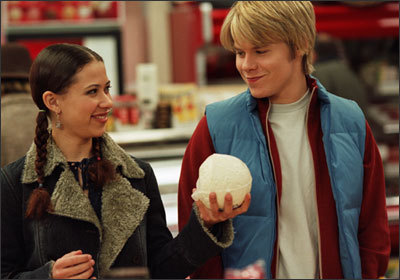 |
| "Black" Daphne from Queer as Folk is a typical example |
In addition, I can also see that AA women feel ignored as well, which is why many seem rather obsessive on topics concerning Interracial and Black-love relationships and dating. Perceiving that they are regarded as irrelevant, they feel a stronger need to get validation from men. When some women don't love themselves, they try to compensate by relying on men for attention.
A day or two ago, I came across a series of paintings by Margret Bowland that express the invisibility that AA women experience because we do not fit into the white standard. Besides their perceptiveness, what makes her paintings even more remarkable is the fact that she is European-American. She has such keen insight into what it is like to be an "other," to not be respected because you are not someone else.
The following is a portion of a statement by Bowland on this issue. You can read it in its entirety here.
We inhabit a purely relative world, in terms of belief structures, yet each of us knows and in a sense, believes in, the need to be beautiful. My work is about beauty—what it means to be beautiful and what significance the idea has in the twenty-first century in the world of art. We all know that being beautiful is as important as being rich, that being beautiful is itself a form of wealth. One must be tall, thin and white. One’s features must be diminutive and regular. We recognize deviations from this norm, but recognize that these deviations, even if appealing, are far from ideal. The need to be beautiful fuels one of the largest and most ruthless industries in our world.
Beauty makes sense to me, has weight for me, only when it falls from grace. It starts to matter when it carries damage. Sorrow allows it to cast a shadow. It becomes three-dimensional. It enters our world.
Looking at Manet’s Olympia, I wondered about the two women depicted—the young, naked prostitute and the black maid servant—about the relationship between them and to the man observing them. His implied presence began to unite them to me, not as lovers, but as the prey sharing a foxhole. In my imagination, the women of my paintings entered that room. What my century brings to the ideas of race and beauty and sexual allure began to overlay Manet’s.











1 comments:
Those are not fine art paintings, its illustration. Please understand the difference.
Post a Comment